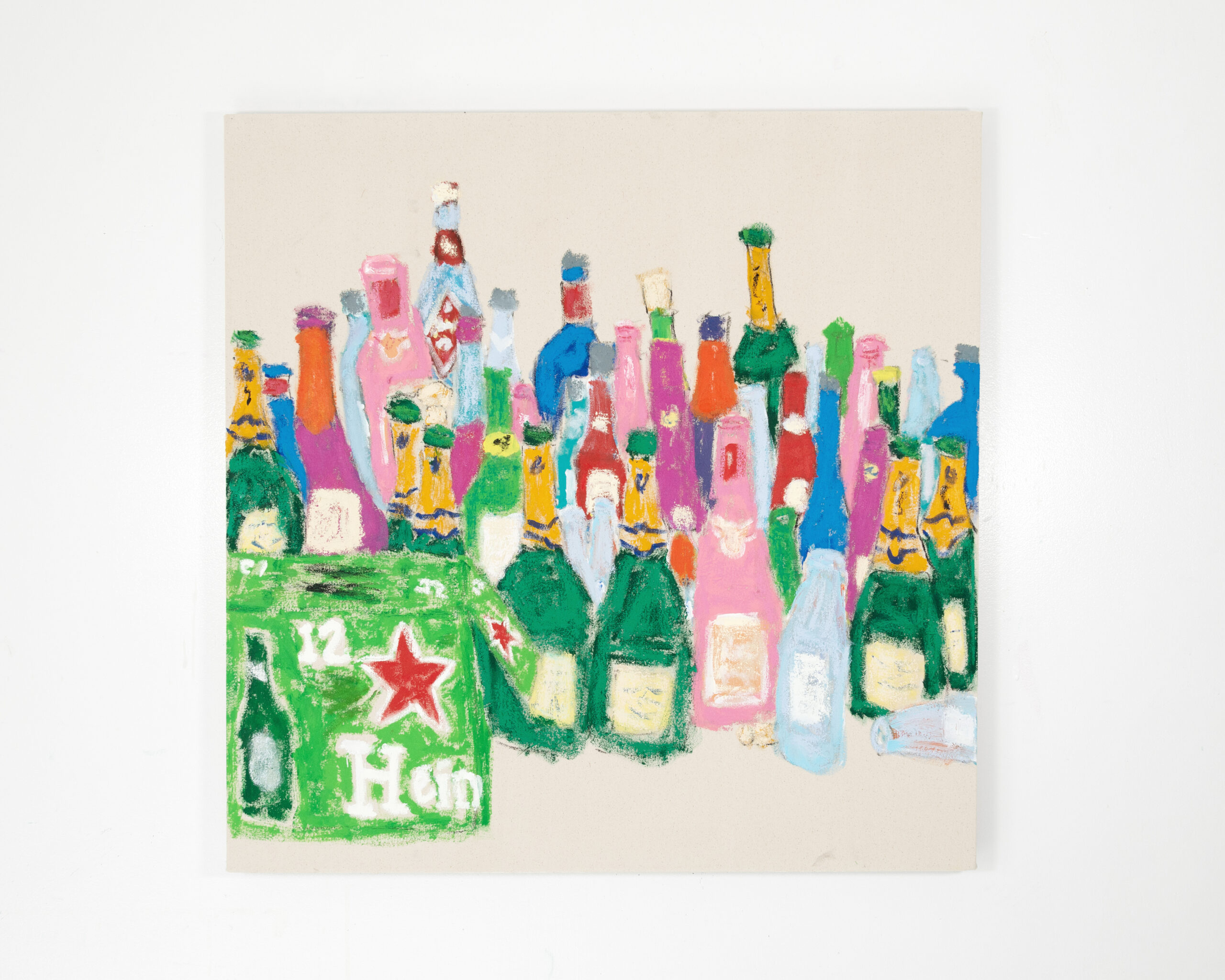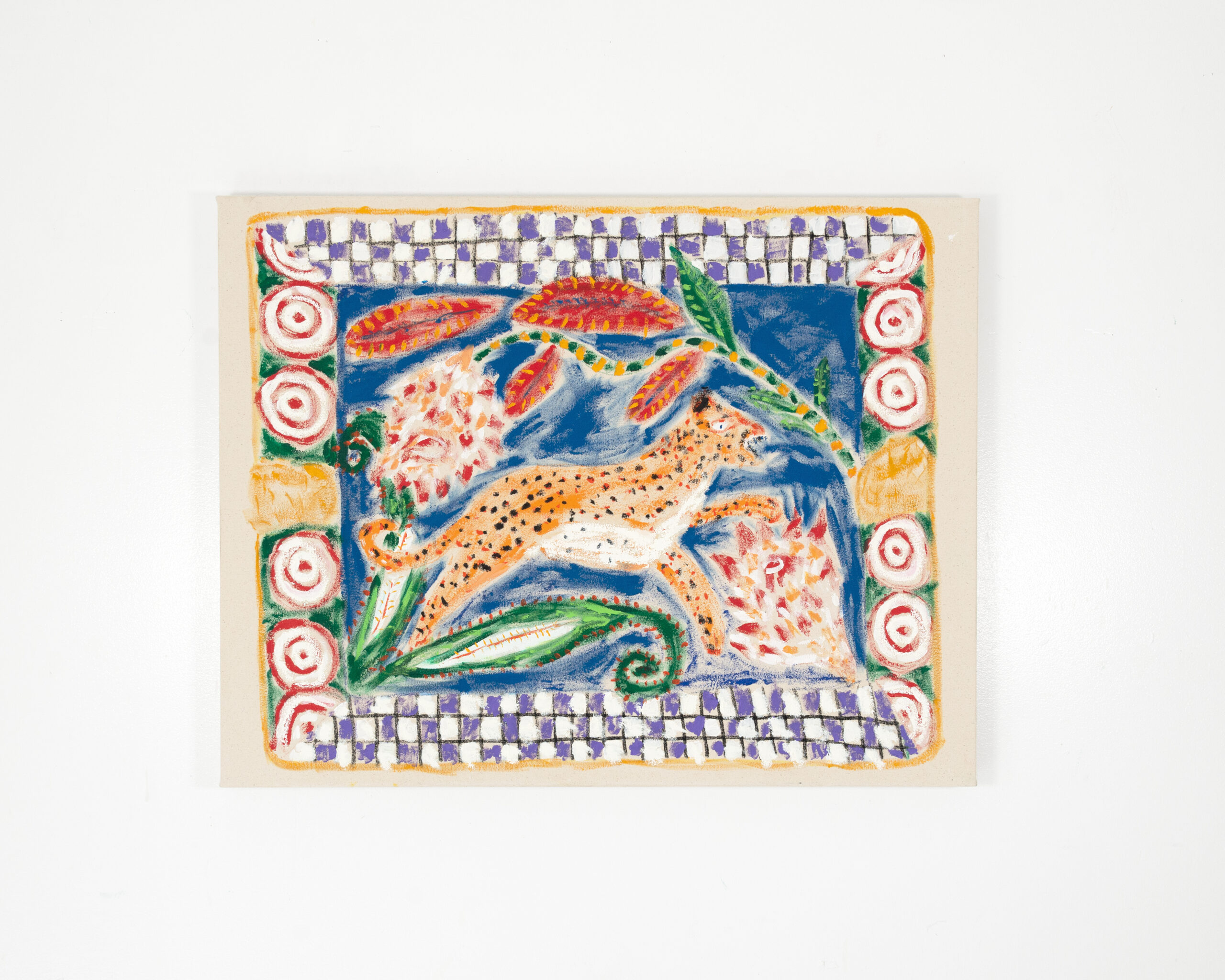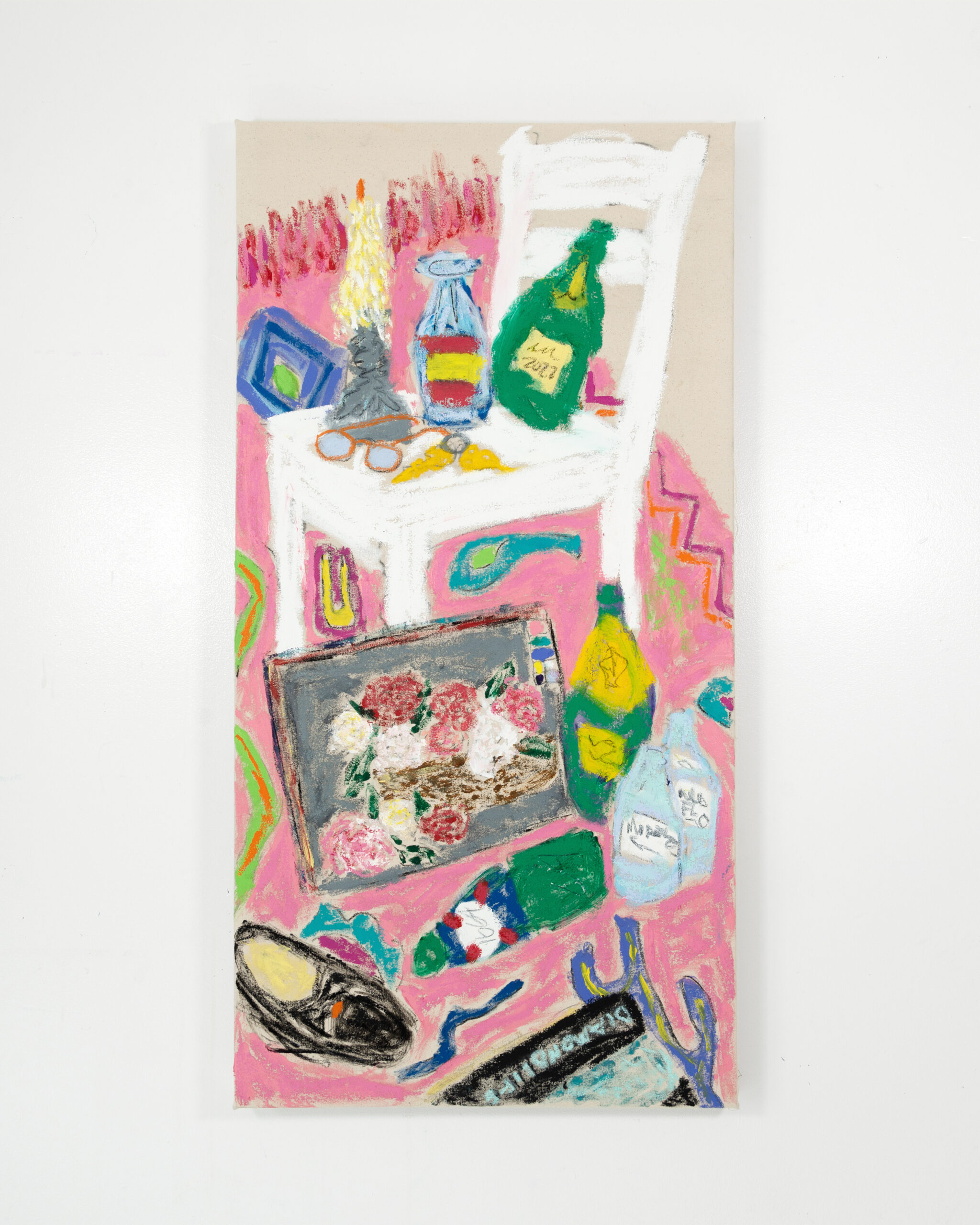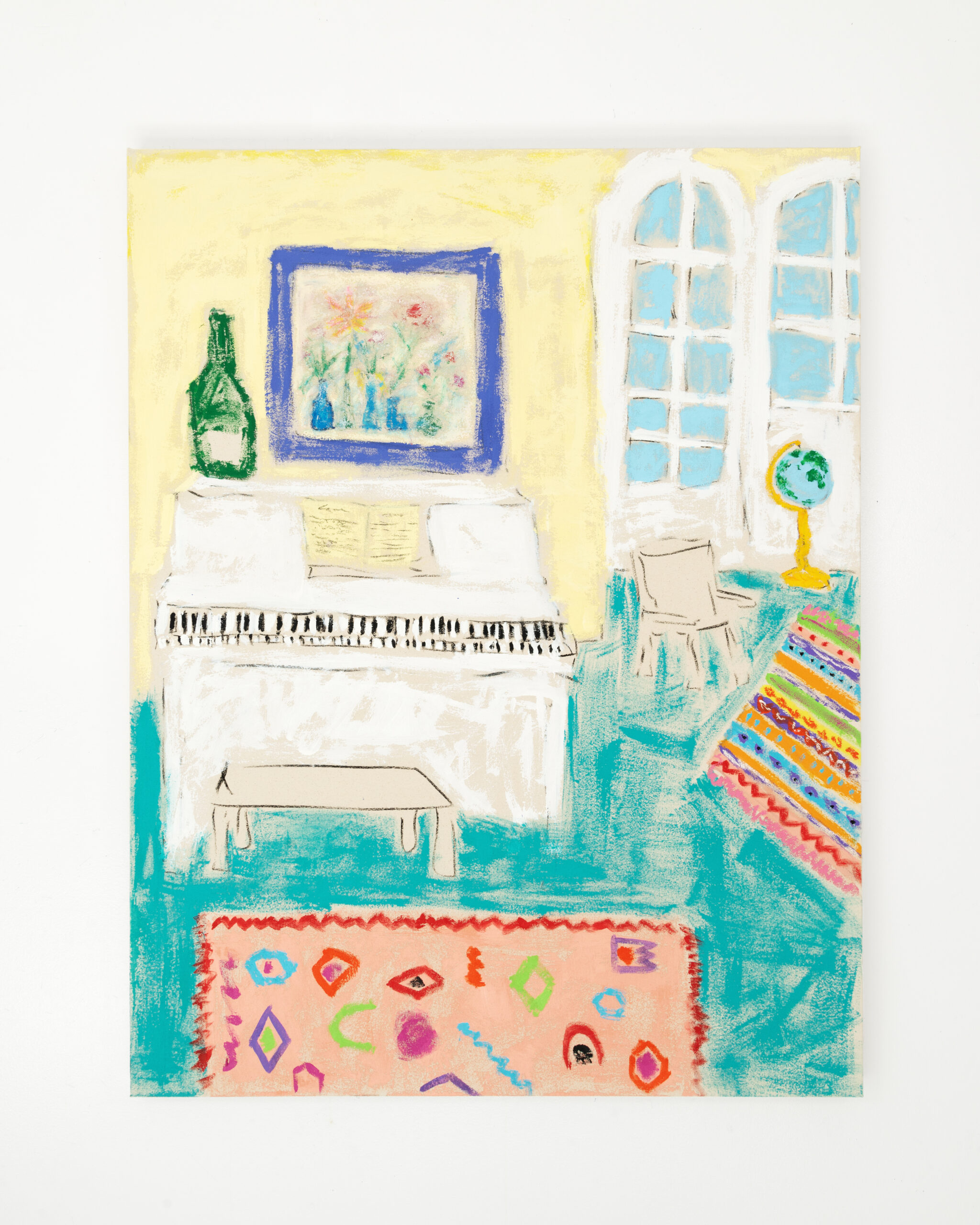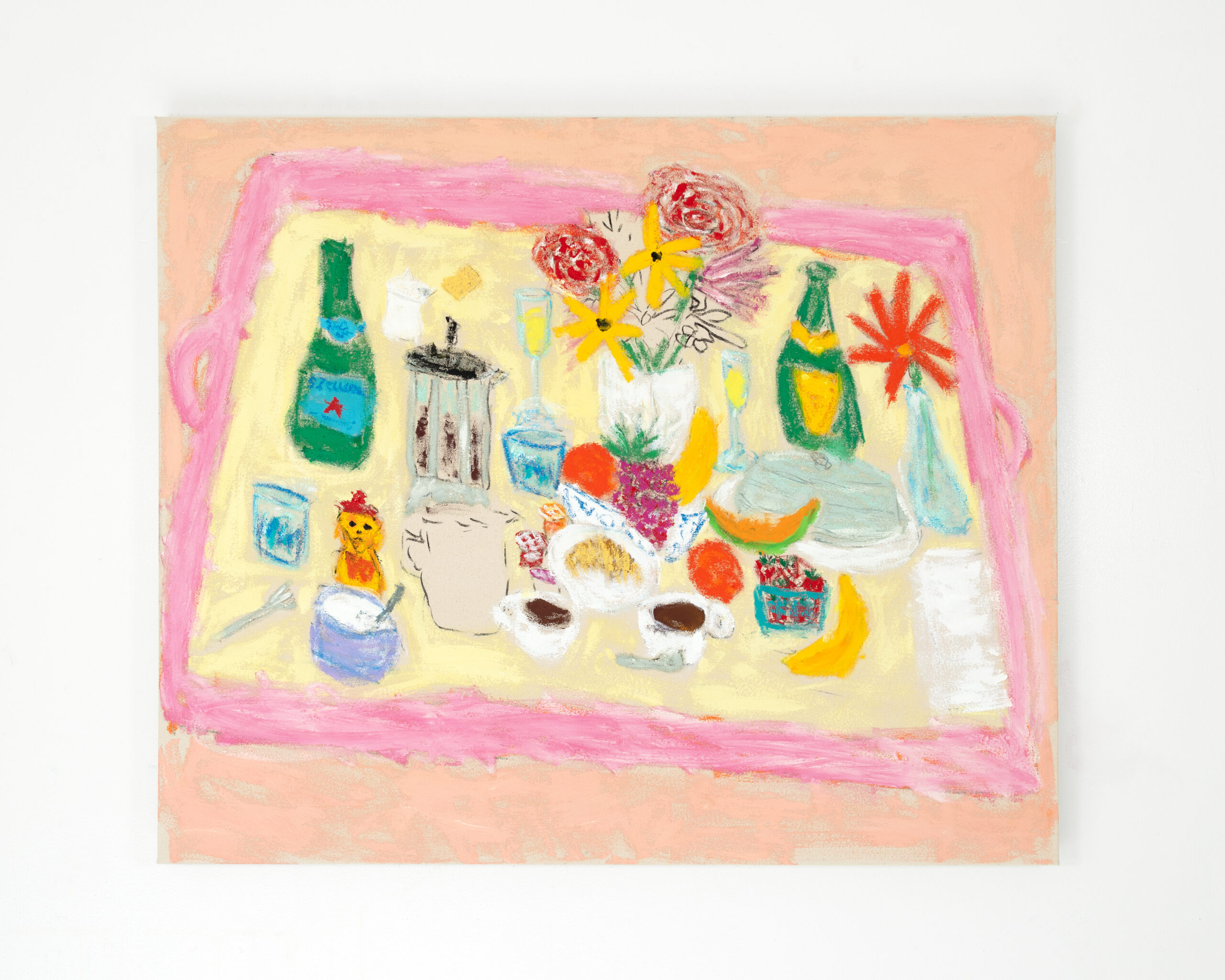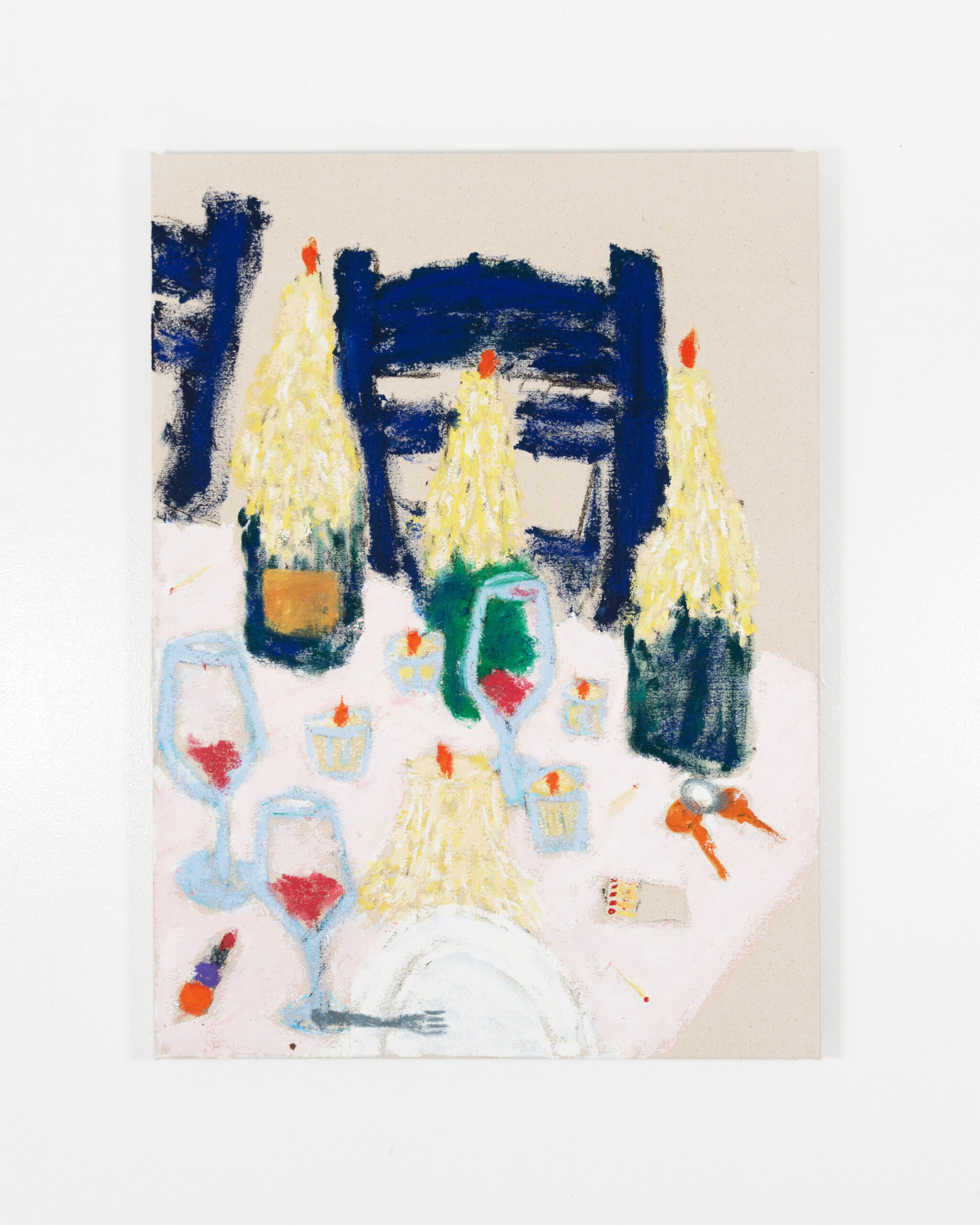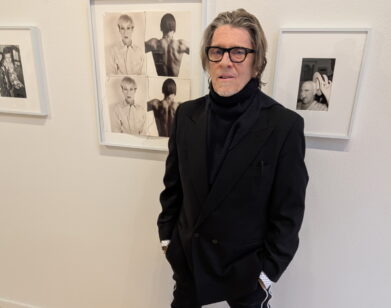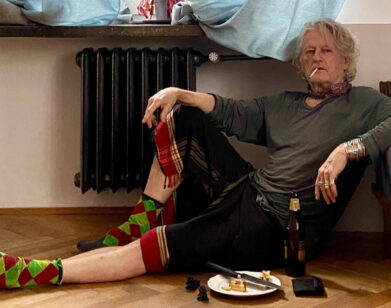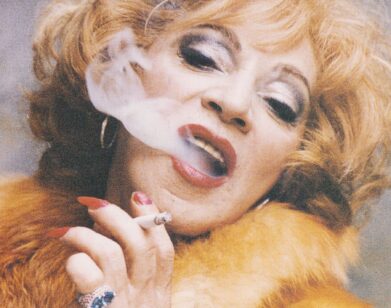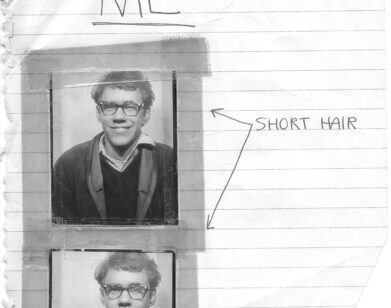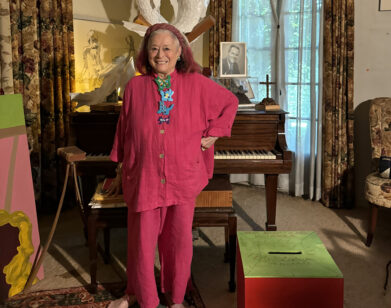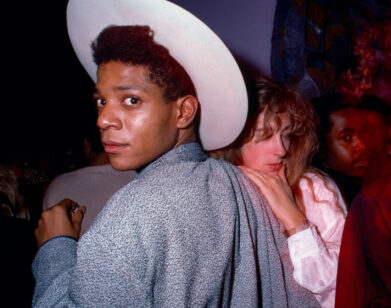STUDIO VISIT
Michael McGregor Feels Like aKid in a Very Chic Candy Store
A black Gucci horsebit loafer sits in the middle of a table. Two empty glasses stand in one corner, beside a packet of McDonald’s fries and a beer bottle, possibly also empty. One encounters Michael McGregor’s works as familiar portraits, clicked at insignificant moments, on a sudden whim, and then tucked away.
After his ex-partner handed him some pen and paper to distract him while she worked on her book designs, started taking painting more seriously. His brightly sketched breakfasts, the bottles of wine and Hermès lipsticks, suggest an obsession with the desirable, the hedonistic—and the kind of uncomplicated dolce vita that draws many to his work. Through colors and line composition, McGregor evokes feelings. In his work, he takes in the world with the eyes of a child who’s curious rather than overwhelmed.
Over the past eight years, McGregor has exhibited at galleries in Los Angeles, New York, Maroux, and Jardin; in March 2024, he’ll publish Room Service, a compilation of drawings on hotel stationary, with Paragon Books. As if plucked from one of his very own canvases, he was sitting at a picnic table strewn with cassettes, empty bottles, and a pair of high heels when we got on the phone to talk about painting the familiar, his beloved Los Angeles, and why he doesn’t make plans while traveling.
———
UPASANA DAS: You’ve said that you were inspired by the flower store where you, your mom, and your sisters worked. How so?
MICHAEL MCGREGOR: I always thought that the flower store inspired me when I looked back on my life, but in the moment that was not true. I worked there when I was a teenager. I didn’t want to work there, but I think it taught me something about color and shape and tangible beauty. It was the world that I lived in, [even] if I didn’t necessarily notice it until I wasn’t living in that world anymore.
DAS: That makes sense, because the colors that you use are very bright and vibrant. What’s your relationship to color?
MCGREGOR: It’s a good question. I lived in Mexico for four years, and before that I pretty much lived in New York for a really long time. Moving to a place like Mexico City that’s really, really colorful in all aspects of life, versus New York, which has a lot of personality and a lot of color in its attitude but is all gray in the way that it looks, just shocked my eyes and it woke me up to the possibilities of a colorful existence that was not New York or London or Paris or Berlin. These cities were the cultural epicenters of the time but it was all very minimal, very dark, very bleak, very conceptual. I wanted to tap into something that was more human, organic and representative of the natural world.
DAS: What made you move from New York to Mexico?
MCGREGOR: I had a radio show at the time in New York with a guy named Gerónimo Giménez, who is from Mexico City, and he started taking me down there. After a while, I just became really good friends with a lot of his friends. I was really sick of New York and burnt out, and I just wanted a change, so I quit my job and got rid of all of my stuff and left two weeks later.
DAS: You were working in an office in New York. Did you still paint?
MCGREGOR: Yeah, I was making music and some visual art, but it was very different. I really started painting again because I was dating a woman who is a book cover designer, and sometimes she would give me pencils and paper and tell me to shut up and go make some stuff while she was doing her work.
DAS: How would you describe your artistic style?
MCGREGOR: I like moments that aren’t obviously the big moments in life. I like the quiet moments. I like things that feel really normal or boring that contain some truth, and I like to create spaces in my work that remind people of their everyday life. But there’s the exaggerated quality, and this is oftentimes where color comes in.
DAS: Yeah, there’s an element of childhood to your sketches.
MCGREGOR: That’s a huge part of it. Technically, I just think that my skills aren’t very good, so that’s the reason that things look very childish, but I don’t know. I’m 40, but my eyes and my heart are much younger. There’s a certain point when life builds a huge wall so that sometimes you can’t really see what’s happening. And for whatever reason, I don’t have that. I’m not afraid of the world. I’m more concerned with representing something that is simple and true.
DAS: What are the subjects you find most interesting to draw?
MCGREGOR: Right now, if you went into my studio, you would see a lot of shoes. You would see a lot of books and plane tickets and flowers and furniture. I’m always just fascinated with what people fill their life with, whether it’s clothes or food or furniture or books. I’ve been traveling for a long time, so the settings right now are very Greek and very French.
DAS: There’s something impermanent about the mediums you use. How would you feel if you suddenly lost a piece of something that you drew yesterday morning?
MCGREGOR: I really don’t care. I never get mad about that stuff. To me, once the piece is made, it’s over. If it’s gone after that, it doesn’t matter. This is not a permanent thing, even though all these rich people think that they can live forever. I hate to be the person that tells them that they’re idiots and that they can’t, but that’s okay. No one should have to live forever. We should enjoy the beauty of the world that we’re in right now. I think sometimes people are too concerned with trying to make their legacy permanent when they should be more concerned with communicating with the people that they’re on the planet with at the same time.
DAS: In your own life, are you more of a solitary person?
MCGREGOR: I don’t know if this is a classic artist thing or what, but there are times when I don’t see anybody, and there’s other times where I go out every single day for weeks. I like the energy of people, but if I’m in a work mode, I find people’s energy distracting and I just want to be able to get my stuff done. It’s a pendulum.
DAS: You recently worked with Mickey Boardman on “Eat Me!” What made you conceptualize the bottle of mayonnaise?
MCGREGOR: I’ve done many mayonnaise drawings and paintings over the years. Sometimes, four bottles of different mayonnaise. Sometimes, they’re very, very large. This one was part of a larger collection of condiments and objects that I have been putting into my work for a long time. It’s like a Warholian joke. There’s an abstraction to it that I think people relate to that I quite like, and that’s maybe what attracted Mickey to the pieces as well.
DAS: You mention Warhol, which makes me wonder about your other artistic inspirations.
MCGREGOR: Well, I love Hockney. He has this quote, “I paint what I want, where I want, when I want,” and I’ve always felt the same way. My paintings are reflections of my life. That’s all I can say about them, really. I’m a huge fan of Raoul Dufy, the French Fauvist painter from about 100 years ago. There’s a Scottish colorist named Alberto Morocco who isn’t very well known, but he’s incredible. I am also a huge fan of John Craxton, a British painter who lived in Greece for a really long time. He’s probably one of my more recent obsessions.
DAS: A lot of your paintings give me a sense of an escape, as if on a permanent holiday. Is that something you’re conscious of?
MCGREGOR: In some ways, my life is like I’m on a permanent holiday. At the same time, that’s not true, because I do work a lot, but I also try to live my life as if I don’t have to work, which is a total impossibility.
DAS: Yeah.
MCGREGOR: You know what? I don’t think escapism is bad. There’s a tendency, and I don’t know if this is just a Christian Western thing, to think that escapism is just turning your back on the world. I don’t think that that’s necessarily true, or that it’s a bad thing. For a lot of people, reality is overwhelming, and our contemporary reality is very restrictive and demands a lot from people, so people need to escape to get out of their regular lives, to forget about their jobs or their relationships or their problems. There’s nothing wrong with escapism. You can always come back.
DAS: What’s your favorite city?
MCGREGOR: For a long time, I used to say that Ho Chi Minh City was my favorite, and then when I went to Mexico and Mexico City was my favorite for a long time. It still is in a lot of ways, but I just don’t spend as much time there as I used to. Right now, there’s two. It’s Paris and Athens. That’s where I’m spending most of my time outside of Los Angeles. I have an apartment in Athens too, so I go there a lot. There’s something that happens in Greece that I’ve never been able to understand, but it always makes me feel good, even when it’s not good. I feel very at order there.
DAS: So what made you create The Greece Notebook?
MCGREGOR: Well, I was living on an Island in Greece and I was making a lot of paintings and I got really nervous. I made about 50 paintings, and I started thinking like, “Oh, I’m going to have to send these back to the US,” and that wasn’t going to be so easy. So I slowed down on the paintings. I had a lot of hotel paper, so I was making all those drawings, and I had another notebook that I would carry around with me as I traveled. I just decided, “All right, there’s 44 pages in this book. I’m here for 90 days. If I think about this like a camera with film, I take one every single day.” Or even just for myself, I would remember, “Oh, I was in Paros here. I was in Antiparos here. I was in Sikinos.” I’m usually by myself when I travel, so I have a lot of alone time. I’m usually just sitting in a cafe or a bar for many hours a day, and if I’m not reading, then I’m going to be making some quick drawings. So The Greece Notebook was what came out of those three months.
DAS: This makes me wonder, how important is editing to you?
MCGREGOR: I don’t really edit. If I don’t like something, I usually throw it out and start over, or I just don’t do it.
DAS: What made you move to L.A.?
MCGREGOR: I wanted to be near the ocean and I wanted to be near Mexico. And there’s amazing light here. It’s a great city to be an artist in, I think. A lot of people might disagree with that, but you can have space in L.A. to work. You can go to the store in your car and get materials and not have to take them on the subway or get them shipped to you. There’s a lot of really great art that’s happening here as well. I don’t think L.A. is usually considered among the great art cities, but it really is. In the last 40 years, there’ve been many tremendous artists who’ve come out of L.A. and I think only now the city is getting recognition for it.
DAS: Yeah, most people associate L.A. with commercial art.
MCGREGOR: Totally. L.A. would traditionally be a much more commercial city than say, New York. But I find that funny because that’s one of the attributes that makes it possible to live here. There’s so much access to that kind of stuff and if people need to work, they can get those types of jobs. Where New York is not as interesting of an artistic city as it was 40 years ago. L.A. might actually be more interesting.
DAS: Last few questions: what’s a favorite piece of fashion that you own?
MCGREGOR: Well, my friend owns a pair of Bobby Womack’s stage pants from the seventies that are these crazy green polyester bell-bottoms with tons of beads and pearls. They fit me perfectly. Otherwise, I wear the same thing every day: Levi’s and a white striped button-down.
DAS: What’s your go-to drink?
MCGREGOR: I’ll say the negroni at Harry’s Bar. Harry’s New York Bar in Paris is pretty incredible and the first time I had it, I thought, “This is the perfect negroni.” The other drink I really like is the table wine at any Greek taverna. It’s probably like four euros. It’s very, very cold.
DAS: What’s in the perfect picnic basket?
MCGREGOR: Wine. A good blanket so that people don’t have to sit on the grass or get dirty. Sparkling water, a baguette, maybe some cherries and some olives. Well, I guess it depends on what country it is. If it’s In Mexico, I would try to get some mariscos, aguachile. Where in France, I guess we’d get some rillette de canard.
DAS: Lastly, what are you working on at this moment?
MCGREGOR: Well, in February 2024, there’s a book of hotel drawings coming out. It’s called Room Service. It’ll have over 100 different hotel drawings on it, and there’ll be a couple of exhibitions alongside that. Right now, I’m working on a solo exhibition that will be in New York in April 2024 for Hashimoto Contemporary. Otherwise, I’m just working on a bunch of paintings.


